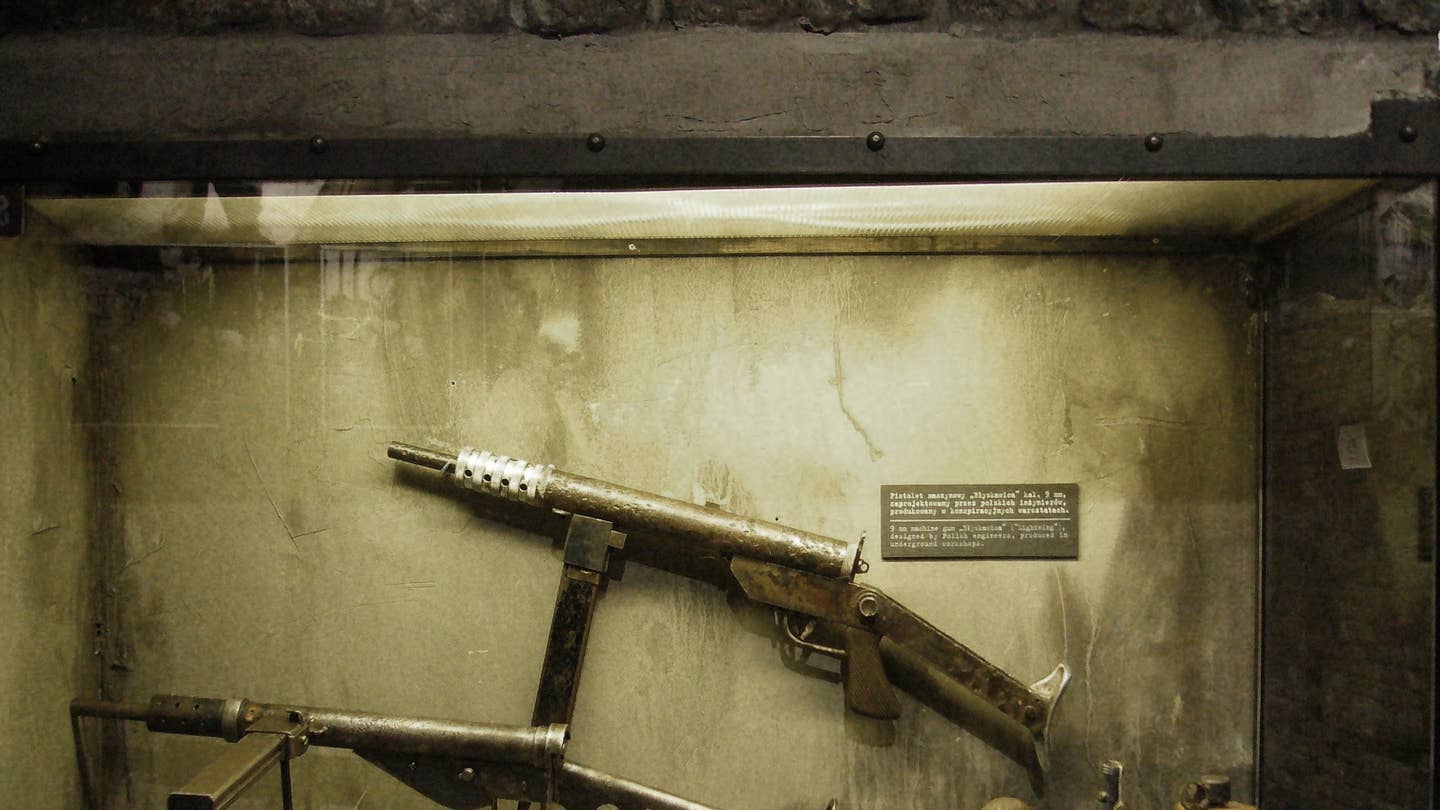This submachine gun looked homemade, but it killed lots of Nazis

SUMMARY
This submachine gun was a weapon that didn't get any respect – at least as far as its nicknames are concerned.
In fact, some were downright insulting. The more printable epithets include "The Woolworth Special," "The Plumbers Delight" and "The Stench Gun."
But there's no doubt about it: The Sten gun was one of the most widely used submachine guns of World War II, even if it did look like it was made from leftover pieces of plumbing.
Alan Lee, a member of the Parachute Regiment during the war, said the weapon was best used for close-quarters combat. In a section of 10 men in the Paras, Lee said, the sergeant and corporal always carried a Sten gun as did most of the officers.
"When you went into a village or went into a house, whatever it was, it was a reliable weapon," he said in a video interview that is part of an oral history of World War II compiled by the National Army Museum in London. "It wasn't a reliable instrument for anything over 100 yards, but for anything close-quarters, it was very reliable."
Hastily contrived in the early, desperate days of WWII, the Sten was part of a last-ditch effort to arm British troops.
Terrified Britons knew they did not have enough weapons to repel a German invasion force. The British lost thousands of small arms that were destroyed or simply abandoned after the devastating rout at Dunkirk.
But two British weapons designers – Maj. Reginald V. Shepherd and Harold J. Turpin – worked together to create a simple, blowback-operated submachine gun that could be quickly and cheaply made from machined steel. The Royal Small Arms Factory at Enfield produced a prototype – take the "S" from Shepherd, the "T" from Turpin and the "EN" from Enfield and you have the origin of the weapon's name.
Produced in both Great Britain and Canada starting in 1941, the Sten was often quickly welded together, the slag filed off and the completed gun then thrown in a pile with others of its kind. However, the Canadian-manufactured weapons often had better production quality, with smoother edges and better tolerances.
The Sten really did look like it was assembled from bits and pieces found in a hardware store – in fact, some of the Sten's essential parts in early models such as springs were originally obtained from hardware manufacturers rather than from gunsmiths.
But it only took about five man-hours to make one weapon and the Sten cost about $10 to produce – about $130 a weapon today when you account for inflation.
Workers assemble Sten guns at Royal Ordnance Factory Fazakerley, near Liverpool. It is essential that each part fits perfectly and is not too loose or tight. If parts do not fit easily, they will be rejected as, according to the original caption, "A man's life, or the life of a platoon or a company may depend on good workmanship".
When war broke out, the British purchased every American-made Thompson submachine gun they could get their hands on. But there were never enough.
The Thompson, which was the gold standard of submachine guns at the time, was beautifully made but also exceptionally expensive. In today's dollars, it cost an eye-popping $2,300 per weapon to produce.
Combine the cost of the Thompson and the fact that early on bolt-action rifles from The Great War and hunting guns were often the only firearms available for some units and the Sten was hailed as a godsend.
The Brits and the Canadians manufactured more than 4 million Sten guns during World War II. In addition, partisan groups with access to machine shops often cranked out their own Sten gun copies because it was so easy to make.
It weighed seven pounds empty, nine pounds with a loaded magazine of 28 to 30 rounds. If kept clean and well-maintained it could be an excellent weapon capable of a devastating rate of fire.
Firing more than 500 rounds per minute (sometimes more, depending on the version), designers chambered the Sten for 9 mm Parabellum ammunition, which was the most commonly used pistol round in European militaries. When pressed, a stud allowed the gunner to select semi-auto fire as well.
The choice of bullet was inspired. Users of the Sten usually had no trouble obtaining ammo for the gun wherever they used it, particularly if they raided German supply dumps.
Tens of thousands of Stens were parachute dropped to partisans in Europe and Asia for use against the Germans and Japanese. Suppressed versions of the weapon were also available for covert operations.
Early versions of the Sten were far from perfect. Early versions also had two annoying habits: Jamming (common when the magazine lips were damaged or the weapon was dirty) or firing uncontrollably in full-auto when simply bumped or jostled.
However, the Sten improved with age, particularly after the British invasion panic subsided and weapons were made with an eye toward better craftsmanship.
It also gained a deadly reputation. Lightweight, compact and even concealable, it was often used by British airborne or glider-borne forces.
There even were some units in the British Army that continued to use Sten guns through the 1960s. What's more, militaries around the world held on to the Sten – including U.S. Army Special Forces that used suppressed models of the submachine gun during the Vietnam War.
SHARE
